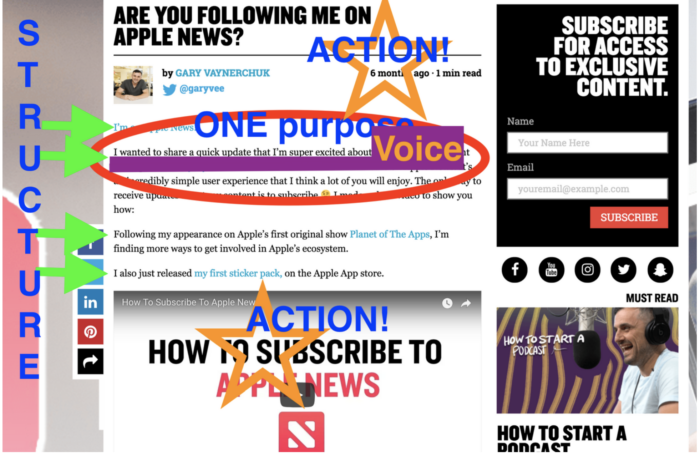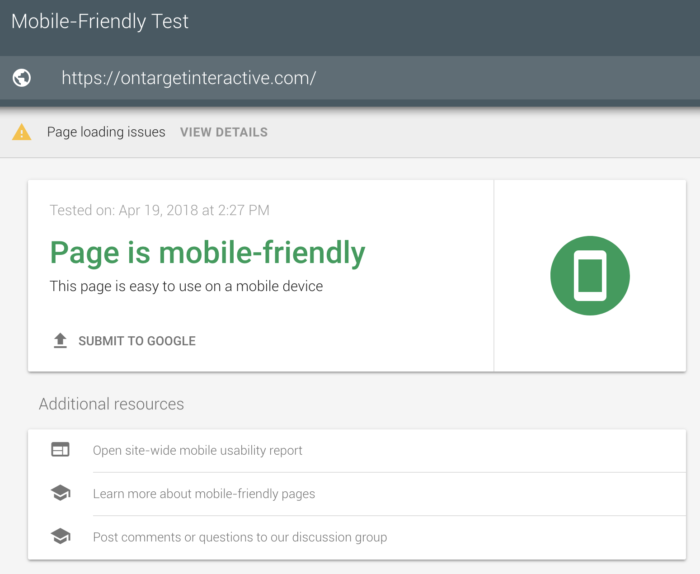For those who didn’t get a chance to attend WordCamp KC this year, you’re in luck! So we’ve compiled notes from day 2’s BEST sessions. Also Including what to do after you create a WordPress site. Then how to conduct a digital media audit. And writing hacks, podcasts and preparing for mobile-first indexing. So If you haven’t already, check out my notes from day 1. Because I covered SEO-friendly redesigns, troubleshooting common, and WordPress issues. Not to mention caching fundamentals! Enjoy!
I’ve created a WordPress website, NOW WHAT!?
In this session, we learned how to optimize your website for search engine results. Then find royalty-free images to add to your website. Finally find resources that help create awesome content.
Speaker: Kim Beasley
- You can find free stock photos on sites like Pexels, Unsplash and IconFinder.
- For content management, use tools like CoSchedule Headline Analyzer. Then the AMI Emotional Marketing Value Headline Analyzer tool to determine catchy headlines. The ShareThrough Headline Analyzer serves a similar function.
- If you need help brainstorming topics, check out HubSpot.
- SpyFu lets you see where your competitors are finding their audience. Then also identifies your competitors’ most profitable keywords. Plus ads for paid/organic search.
Full presentation here:
https://agape3.com/wordcamp-kc-2018/
Eradicate Stale Marketing Efforts in 2018 with a Digital Media Audit
In this session, we learned how to use a digital media audit to assess social media, email marketing, website presence, landing pages, website content, business technology, and more.
Speaker: Andy O’Neil
- Recommended WordPress plugins include Ninja Forms, Manage WP, CloudFlare, and Beaver Builder (page builder).
- Before an audit, you need to determine a clearly defined customer avatar. Next you can use the Customer Avatar Worksheet from Digital Marketer to aid you.
- You’ll need to inventory the digital footprint by compiling email list count, followers, etc.
- You should measure the page speed using Page Speed Insights.
- Use Sprout Social to do a deep dive on social media.
- Fix the low-hanging fruit first with digital channel optimization. This includes things like fixing social media accounts (HD images, correct bio info).
- Conduct a Customer Conversion Review to see how people are converting online.
- Perform a cross-platform integration review to make sure your digital and print are cohesive and communicating.
- Take an inventory of email lists to see how many people are subscribed already. Be sure to benchmark emails prior to making major changes.
- You’ll only want one call-to-action in each email to avoid tracking confusion.
- Depending on the frequency of your email blasts, you may need periodic snapshots of email campaign performance. If you send out emails every day, you’ll need a snapshot every 24 hours.

Full presentation here:
https://2018.kansascity.wordcamp.org/files/2018/03/How-to-Complete-a-Digital-Media-Audit-Andy-ONeil-WordCamp-KC-2018.pdf
Sweet Content Hacks: A Practical Approach for Writing that Sizzles
This session covered the inside track to engaging key audiences, mobilizing action, and gaining raving fans. With fool-proof, office-ready hacks that are guaranteed to kick your writing up to 11. 3 key takeaways: 1. How can I increase engagement with my writing? 2. What are the tried-and-true principles behind solid web writing? 3. How can I make my content punchier?
Speaker: Greta K Perel
- To increase engagement, you need to:
- Have ONE purpose.
- Add structure (paragraphs about 2-4 sentence long).
- Include a shot of action (you want them to like, follow, share).
- Blend with voice (conversational)
- Since we are LAZY, SELFISH and DISTRACTED readers, you want your writing to be broken up into short paragraphs, use short sentences, and be written like you talk.
- Don’t shy away from fragments, simple language and contractions. Basically, ignore all those rules your English teachers taught you!
- If you haven’t already, read The Elements of Style by William Strunk Jr.!
- Avoid the passive voice (ie: ‘the ball was thrown by the boy’ vs. ‘the boy threw the ball’). You want your action, subject and object to be clear
- These office-ready writing tips can boost your writing:
- AMI Headline Analyzer gives you an emotional value score based on length, the use of numbers, alliteration, controversy, etc.
- The Flesch-Kincaid Test tells you what grade level you’re writing at. So you’ll want to keep your content at a 4th-6th grade level (depending on audience).
- Do a computer read-aloud to make sure there aren’t any errors and it flows. You can copy and paste to Google Translate and hit the microphone button.
- SIMPLE WRITING IS NOT DUMB WRITING. You want your content to be accessible.
Full presentation here:
https://2018.kansascity.wordcamp.org/files/2018/03/greta_k_perel_sweet_content_hacks_wordcamp_kc_2018.pdf
Podcast Ecosystem: Where People are Really Consuming Podcasts
This session went over the metrics of Podcasting Ecosystem and broke some myths. It’s not just Apple Podcasts / iTunes – there are new places people are consuming podcasts.
Speaker: Rob Walch
- There’s no such thing as a stream. However what people think of as ‘streams’ are actually just progressive downloads.
- If you’re an SEO, you can upload a link to your podcast along with a text transcript that can be optimized. You cannot upload a podcast to your website directly.
- You need a host to be able to upload podcasts on iTunes. This host can be media files. However you should never host files on your WordPress site. Doing so will slow down your site and may get you kicked off.
- The ideal length for an episode is longer than 51 minutes.
- Indie’s make up over 50% of Podcasts. These are just people and small businesses doing it on their own!
- You may not get a ton of downloads right off the bat. In fact, half the episodes released receive 138 downloads or less.
- You can check metrics in a Libsyn account by clicking ‘stats’. Most advertisers are only interested in podcasts that have at least 5,000 downloads.
- Podcasts are a growing industry. In fact, 21% of Americans download podcasts each month.
- We spend more time in the day consuming audio. Than any other medium.
- Most downloads happen during business hours. They’re a distraction!
- Podcasts are an intimate medium; We have the ability to listen in 3D—it gets inside your head! As such, then there are many more men who podcast than women (15% vs. 85%).
Take advantage of Podcasts for your Digital Presence
- 82% of podcast consumption is done on a smartphone, though iOS is significantly bigger than Android. This is due mainly to the fact that there is no native podcast app in Android. You NEED to be in Apple podcast.
- To submit your podcast, go to apple.com. You’ll need to have an Apple ID that must be validated and authenticated on an iOS device. You must also have a credit card associated with the account. And it helps if the computer that you’re using has been validated as well.
- Spotify is a growing podcast market, though you can also insert podcasts as a Native Video to share on Facebook.
- You need an RSS feed and you need to upload your podcasts to Pocket Casts, Stitcher, CastBox, Podcast Addict, Overcast, Spotify, Apple Podcast
- It’s not impossible to rank in the top 200 shows in iTunes. The ranking is based on new subscribers only. So If you have a lot of new subscribers in one day, you can rocket to the top!
- Search is ranked by the total number of subscribers.
- Consider the future of podcasts when mapping out a strategy. Alexa is moving to the car. So you can ask Siri to play podcasts in the car. The connected car will come down to 5 audio platforms: Alexa, Apple CarPlay, Android CarPlay, Pandora, and Spotify.
- ‘Skill’ is an app in the Alexa world (“Alexa, enable….”)
- You can use Apple’s consumption data to tell where people are listening. Then see where they dropped off.
Full presentation here:
https://2018.kansascity.wordcamp.org/files/2018/03/Rob_Walch_Podcast_Ecosystem_WordCamp_KC_2018.pdf
Preparing for Google’s Mobile First
This session gave attendees tips for diagnosing the potential impact on their site. As well as providing helpful WordPress tweaks, plugins and best practices for staying Mobile First.
Speaker: Michael Black
- Google will judge websites based on how they perform on the smartphone version of Googlebot.
- Ranking will be based on how the site works on mobile and will show the mobile version of a page in the search results. It will also show for site cache.
- The two indexes will not be separate, and you will notice a lot more visits from the Smartphone Google bot in server logs.
- SPEED is imperative. This is the largest paradigm shift in Google’s history.
- You’ll want to look at Google Analytics (Mobile overview). To see if there is a big difference in desktop and mobile ranking.
- Who is your desktop user? It’s a B2B environment: at work, sitting in a chair, large screen, full keyboard and mouse. With less distraction by environment, full browser, lots of bandwidth.
- Compare that to your mobile device user. They’re traveling, distracted by environment and app notifications. While also more likely to make impulse purchases, slower processes, limited multi-tasking, screen orientation, using an in-app browser (Reddit), less bandwidth, less on-screen content.
- The first thing you want to do is run a mobile friendly test.
- Some of the trickier optimization tasks you may have to deal with are:
- Images need to be able to be squished down (WP Smush).
- Optimize render-blocking resources.
- Remove sliders (tons of large images).
- Never show content-blocking interstitials (pop-ups).
- Implement easy engagements/conversions (ie: click to call).
Easier optimization tasks are:
- Make conversions as easy as possible (can they accomplish what they want to accomplish?).
- Make forms as small as possible (may need multi-variant test).
- Integrate mobile pay.
- Use click-to-call links on your site (use icons).
- Include contact info at the top and bottom of each page.
- You’ll need mobile-friendly title tags. Have the keyword first, not the brand name. Keep it at 55 characters. Make sure the width/pixel count is the same on mobile as desktop, and Yoast has a preview for this.
- Description tags can be between 60-320 characters depending on device and listing location. 175 characters is average, though it can get shorter if you have a listing with more pages as additional results.
-
- You still need H1s, structured data, etc. The content is treated the same.
- Don’t take out content, instead just smush it down to an expendable area (ie: ‘read more’).
- AMP does not count as mobile-friendly. AMP is a text and an image, light and fast, and geared toward News type results.
- Use webpagetest.org to see details about individual resources loading on your page.
Full presentation here:
https://2018.kansascity.wordcamp.org/files/2018/03/michael_black_wordcamp_kc_2018_google_mobile_first_indexing.pdf














